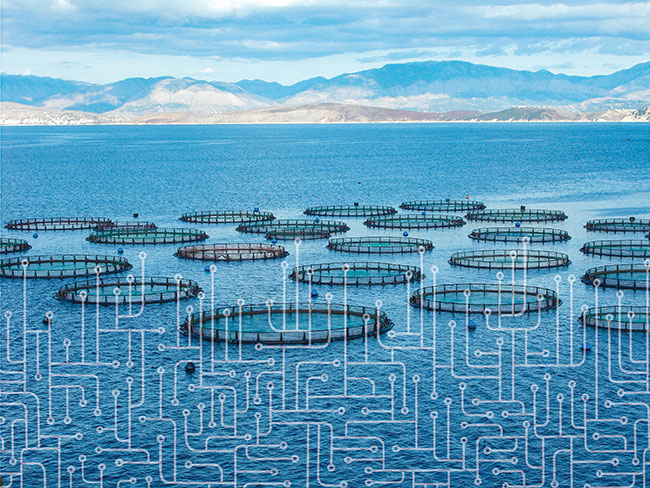
How Digital Twin could double down farm efficiency
January 21, 2021
By Lalou Ramos
 File photo: ©William Richardson / Adobe Stock
File photo: ©William Richardson / Adobe Stock Automated fish feeders are now standard in most fish farms but, someday, in a not-so-distant future, you will be able to “install” and test run an advanced automated fish feeder in your farm without bringing the actual equipment in your facility. You will be able to “build” enclosures in a distant bay within minutes and without physically doing it. Say hello to “Digital Twin,” an emerging technology that enables near- or real time replication of fish farm environment, allowing you to streamline processes in a virtual environment to minimize loses and maximize yields of your farm. In this issue of Tech Talk, we will take a closer look at Digital Twin and how its benefits will trickle down to smaller farmers who do not have the resources to deploy this nascent and potentially costly technology.
What is Digital Twin?
Digital Twin refers to a digital replica of potential and actual physical assets (physical twin), processes, people, places, systems, and devices that can be used to enhance the operations of various industries, including aquaculture.
Sounds like the technology behind flight stimulators, how is Digital Twin different?
Simulations are indeed used in various industries to analyze the performances of systems and to test and implement new ideas. But while flight simulators use “stored data” to recreate flights experiences based on user’s interaction with the system, Digital Twin replicates environment based on real time or near-real-time information captured in the real world. For instance, if you want to recreate a Digital Twin of a river you want to do a site analysis of, real time data from the exact same location needs to be captured and digitally mirrored.
Isn’t that similar to installing a live camera on the river?
Yes, but the data you capture for the purpose of creating a Digital Twin is deeper than sound and visuals. For instance, you can track the current temperature and salinity of the water, the presence of microorganism, tidal movement etc. This high-level information will be used to create a digital world where you can run various test and simulations.
How are data collected in real world?
The 2D and 3D data captured for Digital Twin are generally collected from Internet of Things (IoT) devices, sensors, and other embedded devices. When creating a Digital Twin of an ocean for instance, real time data captured by sensors can be combined with additional structured and unstructured data from different sources such as private companies’ data, citizen, science or historic data collected prior to digital age that are all relating to the ocean.
Can you cite other examples of how Digital Twin can be applied to fish farming?
Let us assume that there is a Digital Twin focused on capturing information on the metabolic system of farmed salmon. Imagine how insights gained from research in different farms can help farmers accurately assess feed and environmental factors affecting the salmon biology?
The technology will be costly for small farmers, what is there to be excited about?
Given its potential to positively impact the aquaculture ecosystem, Digital Twin will be top of mind of government bodies and private entities that have the resources to fund these research. The longer the research runs, and the more farms get involved in the study, and the more accurate the predictive data to be collected and applied solving the industry’s biggest problems such as sea lice infestations. Ultimately everyone benefits.
Assuming the technology matures and becomes affordable, what other practical uses of Digital Twin can we look forward to?
Vendors of feed and farm-related tools and equipment will be able to visualize the specific needs of your farm to identify the right solution for your production challenges. You will be able to test new equipment without installing them in your farm. Lastly, you will be able to install and repair equipment by yourself using simulated animation.
Advertisement
- Retail sales cushion pandemic’s impact
- Nobel-Prize-winning tool CRISPR being explored in sea-lice fight





